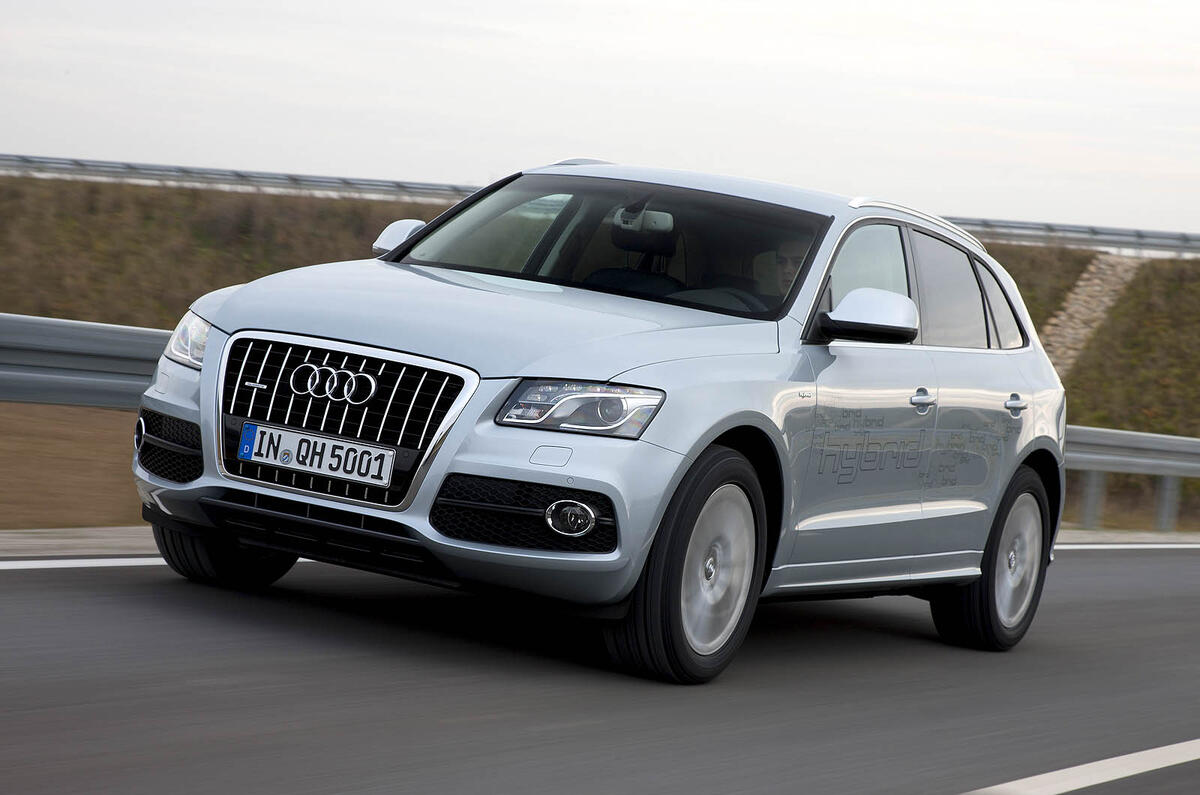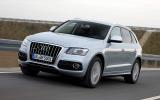What is it?
This is Audi's first production hybrid car and it will go on sale across the world 'during 2011'.
Under the otherwise unchanged exterior of this pre-production machine, the Q5's running gear has been substantially re-engineered.
An electric motor is fitted between the engine and the eight-speed Tiptronic transmission. Audi has dropped the transmission's torque converter and replaced it with a multiplate clutch operating in an oil bath. This clutch pack couples and de-couples the engine and electric motor. The Q5's engine is Audi's familiar 2.0-litre turbocharged, direct-injection petrol unit. It has also been modified for hybrid operation.
See pics of the Audi Q5 hybrid in action
Ancillaries such as the air-con system are now driven by electric motors rather than mechanical drive belts. It does without a starter motor, using the electric motor to spin into life.
The power electronics module, which switches the battery's direct current to alternating current for the motor, sits on top of the engine. At the rear of the car, a slim battery pack (a modest 1.3kWh, 38kg in weight and capable of powering the car for 1.9 miles at 38mph) has been fitted above the rear axle. To add to the complexity, this battery, the power electronics and motor all require their own cooling circuits.
What's it like?
Audi says the Q5 offers five different running modes and the driver can also select three running modes.
EV, which prioritises battery-only running in the city, 'D' which switches between the engine and motor for maximum range and 'S' mode for the full 354 lb ft torque from both motors. The key to a successful parallel hybrid drivetrain is a seamless integration between the engine and electric motor, because the software will swap frequently and quickly between the two power sources.
Sadly, the Q5 test car suffered from occasional, but noticeable, transmission shunt as the engine was cutting in after an electric-only start.
Other demerits include an engine that was surprisingly vocal under acceleration and very poor steering feel coming off the straight-ahead position.
Should I buy one?
While this Q5 had plenty of pace, rode well and is nice place to sit, it hardly makes a case for itself in Europe, even if the motor integration problems are solved by launch time.
Although under hard acceleration it has a power and torque advantage, it is no more economical and hardly more refined than the Q5 TDI 170 diesel. It will also be more expensive. And while this petrol hybrid puts out much lower levels of air pollutants than even an EU5 diesel engine (a major consideration on the US market) even that advantage will be overcome by future 'clean diesel' versions of the Q5’s 170 engine. This is a car aimed at Orange County, rather than Oxford.
Audi Q5 hybrid quattro
Price: £35,000 (est); Top Speed: 138mph; 0-62mph: 7.1sec; Economy: 40.4mpg; CO2: 159g/km; Kerb weight: 1998kg est; Engine: 4 cyls, in line, 1984cc, turbo petrol; Power: 208bhp at 6000rpm; Torque: 258lb ft at 1500-4200rpm; Gearbox: Eight speed auto, integrated electric motor, 44bhp 156lb ft

















Join the debate
Add your comment
Re: Audi Q5 Petrol/Hybrid for the US & Japanese Market
Re: Audi Q5 Petrol/Hybrid for the US & Japanese Market
Be nice if Audi and Porsche could bottom the problems with the hybrids befor launching them and then consider teaching the dealer networks the technology so that they can fix them .
Good luck to anyone that risks buying one, see attached link....you need to consider buying a tow truck if you buy a Cayenne Hybrid!
http://www.youtube.com/watch?v=ReY4s6dczlM
Re: Audi Q5 Petrol/Hybrid for the US & Japanese Market
This is all very well, but I and many others - if not the majority - don't necessarily always want a diesel, unless its cheaper as a company car. Its an endless debate, but there are measures of pollution other than CO2 output and I think the ground level particulates are more of a concern. Plus, personally speaking, I prefer the nature (e.g. the way they rev), sound and smell of petrols. Each to their own though - my company car is a diesel for BIK cost and company policy reasons but if I was buying privately I would have gone for a larger capacity petrol variant.